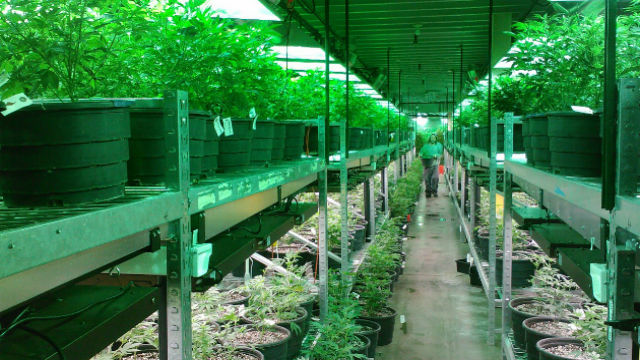The bud may be green, but growing it really isn’t: Weed growers in Denver are straining the city’s electrical grid.
Denver is experiencing spiking electricity consumption, with nearly half of that growth coming from its burgeoning pot industry, as the Denver Post reports:
Citywide electricity use has been rising at the rate of 1.2 per cent a year, and 45 per cent of that increase comes from marijuana-growing facilities, Denver officials said Wednesday.
Now, even though the increase in electricity use is related to the increase is dank bud cultivation, the weed growing industry still uses less than two per cent of Denver’s electricity altogether. But it’s increasing at such a high rate that the number will swell unless the city’s weed purveyors figure out more eco-friendly growing methods.
The reason why weed is such an energy-suck? Lighting. For indoor grow ops, plants need lots of artificial light. That on its own sucks up energy, but then those lights also heat up the growing facilities, which means they need more air conditioning. They also need ventilation fans and humidity regulators.
Boulder Weekly has more depressing stats on the problem with indoor weed growth:
According to data from Xcel Energy and estimates from those familiar with indoor growing, a single light used to grow 16 square feet of pot consumes about half as much energy as the average Colorado house in a one-month time frame.
This isn’t just a Denver problem. Growing weed requires a lot of energy all over. As City Lab pointed out, a Columbia Environmental Law Journal report recently highlighted how draining the pot industry is on energy all over the US:
It consumes six-times as much energy as the pharmaceuticals industry and requires eight-times as much energy per square foot as the average U.S. commercial building. It is estimated that marijuana currently consumes at least one per cent of all of the nation’s electricity. And in California, which reportedly has the largest marijuana growing industry in the United States, consumption totals three per cent of California’s total electricity consumption.
So, what to do about weed’s energy suck? Lighting companies are working with pot companies on more energy-efficient LED lighting options. Tesla has a powerful new battery that could come in handy for keeping energy costs down for weed growers in emergency power outages, or help store home-generated solar energy, but there’s clearly a need for more comprehensive solutions.
In addition to finding better lighting options, there’s a simpler solution for minimising the energy impact of the weed industry: Growing outdoors is more energy-efficient, but it’s not legal in Colorado. When other states legalise marijuana cultivation, allowing for outdoor growth could help lower the drain, though growers often prefer indoors for higher-volume crop yields and year-round growth. While deregulating where you can grow weed could encourage some growers to take crops outside and save energy, regulating licensing to incentivise growers to use renewable energy sources will also help offset some of the drain. [CityLab [Denver Post]]
